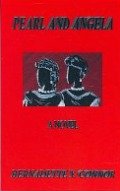 Pearl and Angela by Bernadette Y. Connor
Pearl and Angela by Bernadette Y. Connor
Bee-Con Books at Smashwords
Publication date: July 1, 2006
404 pages
ISBN: 978-0971583856
The story in a nutshell: It’s the late 1940s in an unnamed hamlet somewhere in the American Midwest. In her early 40s, husband long gone, Pearl Little has taken in young Angela Bowman, a girl whose abused life could have been conceived in a Dickens’ novel. Now fast friends, Pearl and Angela battle old demons, new challenges, and Angela’s scheming attempts to take advantage of those around her to gain wealth: the key, she believes, to her freedom.
Pearl and Angela are “colored” – as the black people who make up this novel refer to themselves. Theirs is the simple life – they grow their own food; walk everywhere; spend their lives just living, keeping up the house and garden and doing chores.
They don’t have closets full of fine clothes or fancy things, but they’re not dirt poor either. They’re comfortable. They entertain themselves with long chats on the porch or in the sitting room. (Their hamlet is too small to have a movie house.)
They aren’t oppressed by white employers, hassled by white racists, and don’t come in contact with whites, either in person or by reference. Whites are irrelevant to their lives; Pearl and Angela is a world apart from The Help.
I read this book as a judge for the Global Ebook Awards contest. At first, I was put off. It’s wordy, at times repetitive. The language structure is archaic, the dialog stilted – everyone addresses everyone else by name in every exchange. An example:
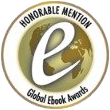 “There was no smile from Pearl when she said, ‘Good morning, Angela.’
“There was no smile from Pearl when she said, ‘Good morning, Angela.’
“’Good morning, Pearl. Thanks for breakfast and packing me something to eat later on.’
“’No trouble for me, Angela.’”
The novel tells Pearl’s story, and how Angela and others affect her life. But the point of view changes on a dime – often, mid-paragraph. We have no idea whose head we’re in . . . no, that’s incorrect: we’re in everyone’s head; we’re just not clear who the narrator is.
Plus, the Smashwords version I read has scores of the author’s edits clearly visible; it reads like a work in progress, not a completed book.
Then there’s the story itself. It’s melodrama, chock full of one crisis after another, replete with tales of woe and strange characters that seriously could have come from Dickens. The evil-as-Satan father, long dead, who haunts Pearl and controls her life. The condemned-to-life-in-bed teen boyfriend. The stand-in husband who mysteriously disappeared. The snake-in-the-grass mortician. The beautiful Angela, sold to a House of Prostitution at age 6. The gossipy Baptist church women with tongues like lances. The scorned lover. The folks who die before their times. The well with the missing bodies. The buried jars of squirreled-away riches.
But guess what? All that and I still enjoyed Pearl and Angela. Here’s why:
- It’s a novel to be chewed slowly, not gulped down.
You have to sit back and relax to read this novel – on the porch, in a lounge chair, by the fireplace. No speed reading here. I imagined the narrator to be an old woman of character – a Solomon Islander from Choisel, black as obsidian, mother of the village chief, in a village without electricity — sitting on the porch, nightly spinning out her story of the Littles and Miss Bowman and the colored folks of this unnamed town.The narrator repeats herself, and introduces everyone by name in every exchange . . . but in voices unique to each character. Of course, when she finally catches a husband, Angela would always address him as “Mr. Shockley” – never, for heaven’s sakes, as “Reynard.” - The book is peppered with little nuggets and pearls of wisdom, insight, and cleverness, for instance:
- “Old habits die hard, Angela, and when fear is planted deep enough no amount of digging and dying kills it.”
- According to Charlie, the Townsends had more than their fair share of mental illness in their family. No one was hidden in the storm cellar but a few needed to be.
- The bedroom was sparsely furnished, like the soul of its occupant.
- Angela’s feathers where brushed in the wrong direction with that comment. She was now determined to visit the Stratton house and find out what everyone knew except her.
- And It’s full of:
- Plot twists and turns enough to keep you on your toes.
- Some laugh-out-loud scenes you won’t forget—Pearl may be a kind, gentle, passionate, self-sufficient soul, but man, can she be wickedly vicious. (By the way, that slime-ball mortician deserved every bit of his painful comeuppance. So much for family jewels!)
- Old slights that never die . . . and return with a vengeance.
- A passel of sharp-tongued, witty, tough, lusty women – you can’t help but cheer them on.
- And some lovely love-making – graphic enough to see; thoughtful enough to appreciate.
But most important, Pearl and Angela works because its style – as much as content, characters, and description– conveys the time and place, and a group of people you’ll remember. It’s a good read.


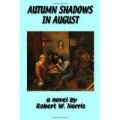 Autumn Shadows in August by Robert W. Norris
Autumn Shadows in August by Robert W. Norris
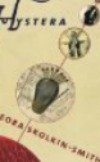 Hystera by Leora Skolkin-Smith
Hystera by Leora Skolkin-Smith Three months and 193 pages later, Lilly is about to be released. She’s “no longer a threat to herself,” her discharge form reads. Is she “well” now? We don’t know. Neither does she.
Three months and 193 pages later, Lilly is about to be released. She’s “no longer a threat to herself,” her discharge form reads. Is she “well” now? We don’t know. Neither does she.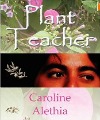 Plant Teacher by Caroline Alethia
Plant Teacher by Caroline Alethia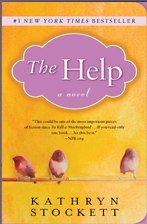 Let’s toast The Help and author Kathryn Stockett’s success. OK . . . now let’s drink to Skeeter, Aibileen, Minny, Celia and the whole cast of the movie for bringing Kathryn’s creations visually to life. As a chaser, let’s down a grand old sherry for all these winners, both on the bookshelves and the big screen. Here’s why:
Let’s toast The Help and author Kathryn Stockett’s success. OK . . . now let’s drink to Skeeter, Aibileen, Minny, Celia and the whole cast of the movie for bringing Kathryn’s creations visually to life. As a chaser, let’s down a grand old sherry for all these winners, both on the bookshelves and the big screen. Here’s why: